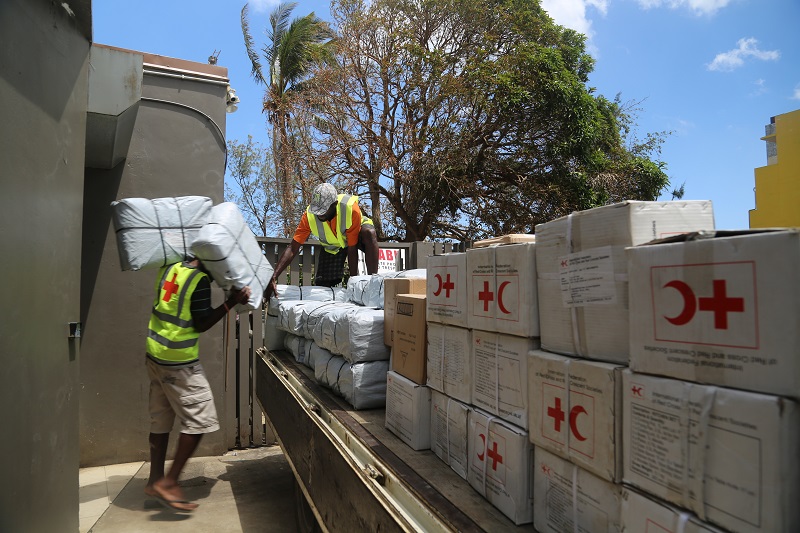Government negotiators fought bitterly last week over which groups and regions are defined as particularly vulnerable to climate change in the latest report from the Intergovernmental Panel on Climate Change (IPCC).
Representatives of countries from an array of different regions, including Africa, Asia, Latin America and small island states, pushed to be singled out as particularly vulnerable.
Tanzania and Timor-Leste asked that the world’s poorest countries, known as least developed countries (LDCs), be added to a list of impacted communities, according to a report of the meeting by think-tank IISD.
Africa and small island developing states (Sids) were nearly cut out of one section on vulnerabilities, the IISD report says, and replaced by a reference to “developing and least developed countries”.
But there was a strong push from many delegates to retain them, particularly as most of those regions’ representatives had already left the talks to approve the report, as they had to catch flights home from Switzerland.
Mexico and Chile wanted to add Latin America to the list of regions that are particularly vulnerable while India wanted Asia included, according to IISD’s report.
The final document lists Africa, Sids, LDCs, Central and South America, Asia and the Arctic as particularly vulnerable.
The benefits of vulnerability
What makes some communities more vulnerable than others is not just physical factors like sea level rise but also social factors like poverty, governance, building standards and infrastructure.
This makes naming specific parts of the world as vulnerable a politically sensitive topic.
The inclusion of the Arctic as one of the most climate vulnerable places in the world, for example, was significant because it came just days after the US approved the hugely controversial Willow oil drilling project on Alaska’s north slope.
There are various reasons for wanting to be named as vulnerable, including global recognition and better access to climate finance.
Last year’s Cop27 climate talks agreed that a new fund for climate victims should be targeted at countries who are “particularly vulnerable” to climate change.
Loss and damage committee ready to start talks following Asian nominations
Samoan ambassador Fatumanava-o-Upolu III Dr. Pa’olelei Luteru, who chairs the alliance of small island states (Aosis), said making specific note of the risks to these islands was “imperative in the context of climate justice”.
“The fact is that we are already facing devastating losses and damages of great magnitude, and funds we should be investing into sustainable development initiatives must be diverted to help us cope with climate change impacts,” he said.
IPCC highlights rich nations’ failure to help developing world adapt to climate change
But recognising growing impacts also gives states the responsibility of acting on them.
Jörn Birkmann researches climate vulnerability at the University of Stuttgart in Germany and was coordinating lead author of one of the underlying IPCC reports.
He told Climate Home: “It seems like governments fear that if their country is not mentioned, they could receive less support (e.g. global adaptation funds),”
He added: “Or vice versa; if they are mentioned it might lead to a stigmatisation or might raise questions about the role of governance.”
Measuring vulnerability
Birkmann said studies on human vulnerability all point to the same global hotspots, particularly Africa.
But even though many governments acknowledge this, there are significant tensions when measuring and mapping human vulnerability.
“It is still difficult in [a summary for policymakers report] to name specific global regions that are more vulnerable than others,” he said.
“The synthesis report is mentioning some regions, but it seems to be much easier for governments to agree on general sentences, rather than pointing to areas or countries where such deficits are evident.”
Green Climate Fund credibility hangs over response to violence in Nicaragua project
Although it misses a lot of nuance about who is vulnerable, Birkmann welcomes the fact that the report recognises global hotspots, “since the success of adaptation and resilience building also depends on the starting point communities and countries have”.
He believes adaptation strategies should not just focus on physical phenomena and climatic hazards such as storms, but also on structures and interventions that reduce human vulnerability, such as poverty reduction, education or fighting corruption – the latter being “a very controversial topic in the political arena”.
Furthermore, when new financial mechanisms for loss and damage agreed at Cop27 are being put into practice, he said it would be helpful to define adaptation goals, not just those on emission reduction.
“These goals should also take into account the very different starting points of regions/countries/communities to build resilience,” he said.” The level of human vulnerability might be such a benchmark of the different starting points.”
